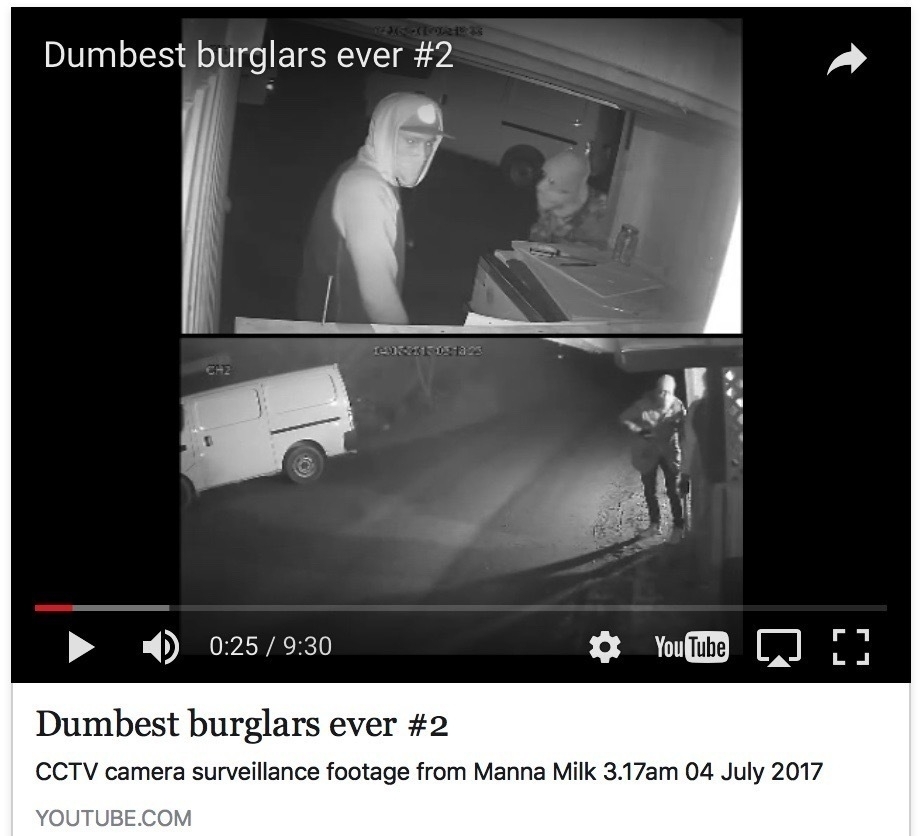
With a suggestion floating around of installing CCTV cameras at the entrance to the Waikawa Beach village, as a response to 3 recent burglaries, a bit of research turned up some useful independent information (See the end of this post).
Reviews are a bit mixed but the general idea seems to be that carefully targeted and actively monitored cameras in identified high crime areas, in conjunction with other actions (eg patrols), can help deter criminal activity, especially in carparks and commercial and industrial areas. Footage can also support Police prosecutions.
International evidence shows that CCTV can be effective when tailored to a specific context but does not support its use as generic widespread solution for preventing crime.
Schemes where Police are actively monitoring the cameras are most likely to be successful.
But does that fit at Waikawa Beach? We're not an identified high crime area and a single set of cameras at a single point on the road in will capture hundreds or thousands of law-abiding vehicles over the course of a month as residents come and go, tradies do their jobs, and visitors enjoy our beach.
Scenarios
One: occasional weekenders visit their bach and discover that some time in the last 3 weeks their house has been burgled. Neighbours can't provide any helpful information. It's unlikely the Police would have any worthwhile information to merit them trawling through weeks of CCTV footage, with the need to track each vehicle to an owner and identify their reason for visiting Waikawa Beach.
Two: residents notice that sometime in the last few hours someone has burgled their garage. They didn't hear or see anything at the time, and nor did neighbours. Again, there's nothing to be gained from CCTV footage that would show any number of residents and legitimate visitors to Waikawa Beach travelling in and out.
Three: residents or visitors at a property, or neighbours, notice unusual and suspicious activity. They call the Police immediately and can report details of a vehicle and its occupants. If they can report the number plate then Police don't need to trawl through CCTV footage, but the footage may be of use if the case comes to court.
It seems the most effective use of CCTV cameras would be if individual property owners were to monitor their own properties, capturing images of possible or actual burglars and their vehicles.

A known effective way to deal with the potential for local property crimes is for neighbours to exchange contact information and to keep an eye on one another's properties. It's easy to set up, free and builds community cohesion.
Some argue that there are already surveillance cameras all over the place — that’s true. But in public spaces we can choose not to shop at the supermarket with face recognition or we can travel down a different street. A camera at the single entrance to Waikawa Beach means every single resident or visitor is being recorded and cannot avoid it.
Even law-abiding people don’t necessarily want to be surveilled, and we have that right to privacy.
Links
From Ministry of Justice :
Evidence suggests that CCTV with high coverage can be effective at reducing crime in car parks when used in combination with other interventions. CCTV can also provide other benefits such as supporting Police prosecutions and traffic management. International evidence shows that CCTV can be effective when tailored to a specific context but does not support its use as generic widespread solution for preventing crime.
While the evidence does not support CCTV as a widespread solution for preventing crime, CCTV has other important benefits such as supporting Police investigations and prosecutions.
CCTV has not been formally evaluated for its impact on crime in New Zealand.
From The effect of CCTV on public safety: Research roundup - The Journalist's Resource :
Cameras could also promote a false sense of security and lead citizens to take fewer precautions, or they could also cause more crimes to be reported, and thus lead to a perceived increase in crime.
… the indiscriminate gathering of information on law-abiding citizens, however well-intentioned, has the potential for misuse.
From Police Instructions: Crime Prevention Cameras (CCTV) in Public Places
Crime prevention cameras:
- are used to prevent and detect criminal offences in identified high crime areas
- are not used to maintain surveillance on individuals or groups
- must be operated in a manner that complies with the Privacy Act 1993 and this instruction.
Collect data so you can see whether CCTV will fix your problem, i.e. collecting statistics on the number and types of crimes in the area, (theft ex-car, assault, fighting, drunkenness, drugs, disorder offences etc.) and the times they occur. This will also help determine whether CCTV has had a positive impact in either deterring criminal activity or assisting in the prosecution of offenders.
From CCTV surveillance for crime prevention: A 40‐year systematic review with meta‐analysis (PDF) :
Research Summary We report on the findings of an updated systematic review and meta‐analysis of the effects of closed‐circuit television (CCTV) surveillance cameras on crime. The findings show that CCTV is associated with a significant and modest decrease in crime. The largest and most consistent effects of CCTV were observed in car parks. The results of the analysis also demonstrated evidence of significant crime reductions within other settings, particularly residential areas. CCTV schemes incorporating active monitoring generated larger effect sizes than did passive systems. Schemes deploying multiple interventions alongside CCTV generated larger effect sizes than did schemes deploying single or no other interventions alongside CCTV. Policy Implications The results of this systematic review—based on 40 years of evaluation research—lend support for the continued use of CCTV to prevent crime as well as reveal a greater understanding of some of the key mechanisms of effective use. Of particular salience is the continued need for CCTV to be narrowly targeted on vehicle crimes and property crime and not be deployed as a “stand‐alone” crime prevention measure.